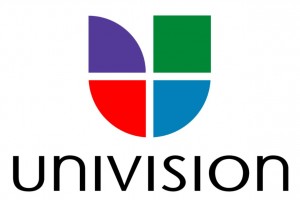Spanish Media Is On The Rise In The U.S., For Now
 This has been a good year for Hispanic media – and by that I mean Spanish language media in general, which industry and academia insists on calling “Hispanic.” Univisión, the leader of the Spanish media pack, is backing the money trucks into the bank and unloading. According to the recently released study by the Pew Research Center’s Project for Excellence in Journalism:
This has been a good year for Hispanic media – and by that I mean Spanish language media in general, which industry and academia insists on calling “Hispanic.” Univisión, the leader of the Spanish media pack, is backing the money trucks into the bank and unloading. According to the recently released study by the Pew Research Center’s Project for Excellence in Journalism:
Univision’s audience continued to grow and now competes with—-and in some timeslots outpaces—-audiences for ABC, CBS and NBC. Indeed, between Univision and Telemundo (and all of their stations), the 2010-2011 season is projected to bring in $1.5 billion in ad revenue.
¿Como se dice dang!? (I meant that rhetorically, but you can insert your favorite Spanish expletive )
And while English language newspapers have been hunkering for the long term down turn –
English-language dailies saw a 5% decline for the six-month period from March to September 2010 compared with the same period the year before.
– Spanish language newspapers remained stable.
(832 versus 835 in 2009), according to the Latino Print Network. And the largest cohort—-weekly publications—-grew by 18% to 117 papers.
Okay, so that’s a lot of numbers laid-out in order to paint a pretty good picture for media en español. But this has been one of those decades in which, given the growth of the Latino population in the U.S., Spanish media was destined to grow even if it did nothing but sit in the boat and rise with the tide.
We know the back story: according the 2010 U.S. Census count, the Latino population in the U.S. grew to more than 50 million – up by more than 46% in the last ten years and more than doubled in the last twenty. We also know that much, but not the majority, of the growth came from immigration. All of that bodes well for the Univisión money tucks and Spanish Language media in general.
The media engine that’s been responsible for most of the growth has been watching this happen from behind the curtain. Mexico’s Televisa is the pre-eminent media producer across all Latin America. From Mexico City to Caracas to Quito, if you watch television you watch Televisa programming. So when immigrants from across Latin America come to the U.S. and see Televisa programming on Univisión, it’s like being home – a ready-made audience that knows the stars and the programs.
But that’s not the entire story.
The Pew Report makes it a point to look forward. The U.S. Latino population
…is also the nation’s youngest ethnic group. The median age of Latinos is 27, while for non-Hispanic whites it is 42 and for non-Hispanic blacks it is 32. Among Latinos, a majority are bilingual. However, as births have become more important for Hispanic population growth than the arrival of new immigrants, the nation’s Latino population is also becoming more U.S.-born. All of these factors could pose a threat to Spanish-language media operations. So far though, the contrary has occurred.
So yeah, Spanish media rules, for now. But with time and given the recent falling immigration trends (read here undocumented immigration), bilingualism will rise and with it the share of Spanish media will eventually decline. Younger, more bilingual and English dominant media consumers will gravitate toward English media and the internet.
It’s not going to happen overnight, but it will. Eventually, as more and more of the Latino population becomes English dominant or bilingual, Spanish media will become an option, not a necessity. But that’s going to take a generation or two to happen.
In the mean time Don Francisco, telenovelas and futbol rule. The dominant Spanish media, it’s consumers and revenues, says as much about America today as does the decline in overall English newspaper readership.
But everything is in flux. We’ll be back to tell another story in ten years.
Follow Victor Landa on Twitter: @vlanda
[Image courtesy Univisión]

